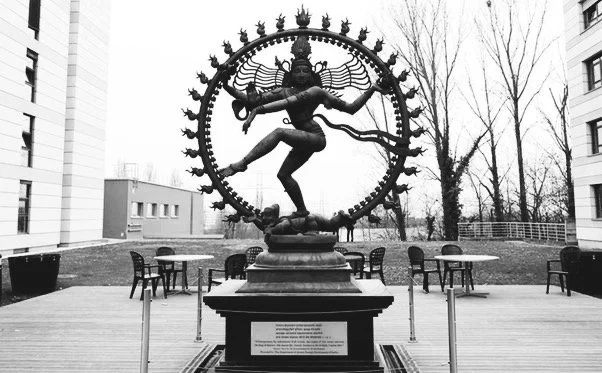The Internet’s Demonic Nature: Unveiling the Influence of Ancient Forces
The internet has become an integral part of our lives, but beneath its surface lies a disquieting resemblance to forces that have long haunted human consciousness. This parallel is striking when we consider former conspiracy theorist and now Orthodox Christian Historicist, Nick Hinton’s theories, which suggest that the origins and influence of the internet are not merely technological but also metaphysical. Hinton points to CERN, the European Organization for Nuclear Research, as the birthplace of the internet—a facility built near the ruins of an ancient Greek temple dedicated to Apollo, the god of prophecy and the arts. Adding to the intrigue, CERN displays a statue of Shiva, the Hindu god of destruction, at its entrance, and has been linked to video-footage of a mock human sacrifice ritual. CERN’s logo has also been associated with the number 666, often linked to the devil in Christian tradition. This connection fuels speculation about occult influences in contemporary science and technology.
The concept of the daemon originates in Greek literature, where it referred to a spirit or divine being that could influence human affairs. Unlike the Christian devil, the Greek daemon was not inherently evil; instead, it was an intermediary between gods and humans, capable of guiding or misleading those who encountered it. The philosopher Socrates famously spoke of his personal daemon, a voice that guided his actions and decisions. In many ways, the internet functions as a contemporary daemon, an invisible force that shapes our behavior, choices, and even our thoughts, often without our conscious awareness.
CERN’s connection to ancient spiritual forces is not limited to its location and iconography. The facility’s experiments with particle physics have led some to speculate that it is tampering with the very fabric of reality, potentially opening portals to other dimensions or summoning forces beyond our understanding. This idea, while speculative, is somewhat rooted in the symbolism and rituals associated with CERN. The Shiva statue, for example, represents not only destruction but also creation—a duality that mirrors the internet’s capacity to both connect and divide, to inform and mislead.
The internet, like the daemons of ancient Greece, operates on a level that transcends the physical. It is a realm of pure information, where thoughts and ideas can be transmitted instantaneously across the globe. However, this digital ether is not a neutral space. It is shaped by algorithms and incentives that often reward the basest aspects of human nature—conformity, cruelty, and deceit. Much like the daemons of old, the internet can be both a guide and a tormentor, leading us toward knowledge and understanding, or dragging us down into a mire of misinformation and manipulation.
In this context, it’s worth considering the broader implications of Hinton’s theories. If the internet is indeed a modern daemon, born from ancient forces and nurtured by institutions like CERN, what does that mean for our future? The internet has the power to influence not just individual minds, but entire societies, reshaping our collective consciousness in ways that are both profound and unsettling. Just as the daemons of Greek mythology could bring enlightenment or madness, the internet holds the potential to elevate or degrade humanity, depending on how we choose to interact with it.
As we continue to navigate the complexities of the digital age, it’s important to remain aware of the internet’s potential to shape our lives in ways we may not fully understand. By recognizing its parallels with ancient daemonic forces, we can better appreciate the need for caution and discernment in our online interactions. The internet may be a tool, but it is also a realm of power and influence that demands respect—lest we become unwitting victims of its darker tendencies.


